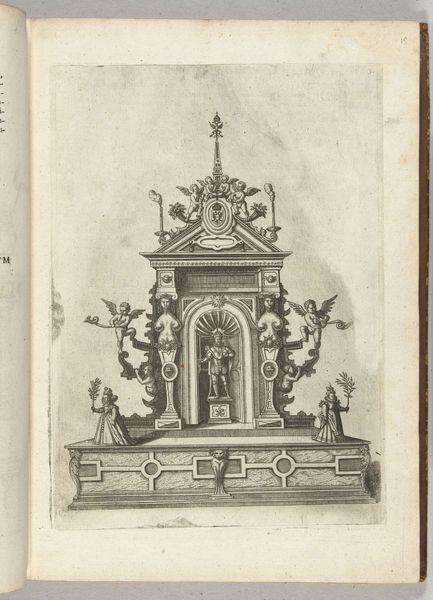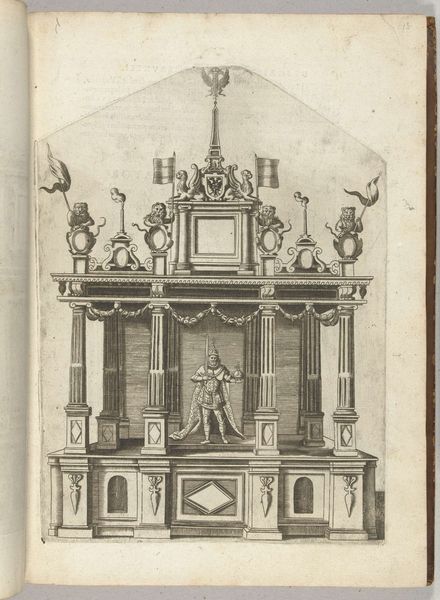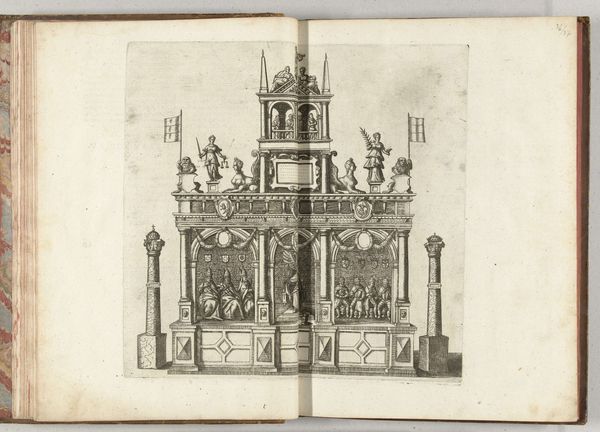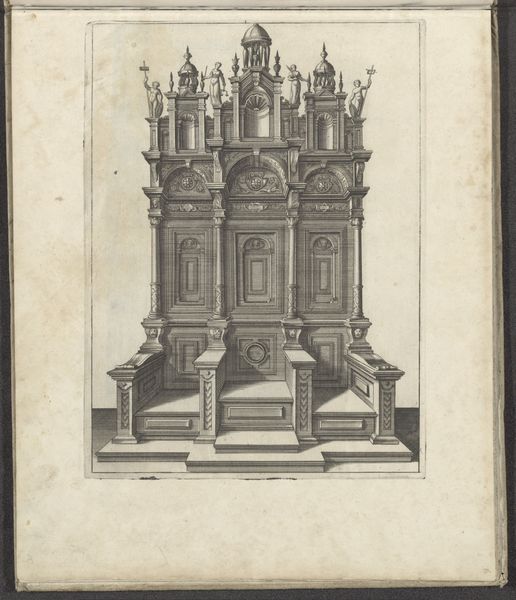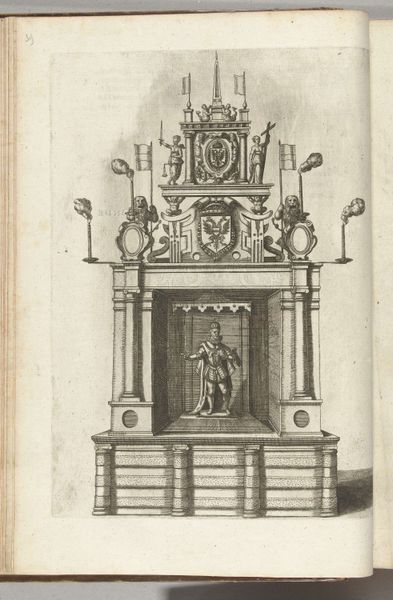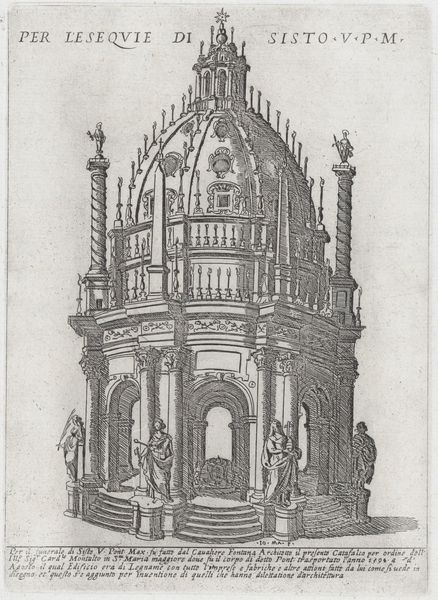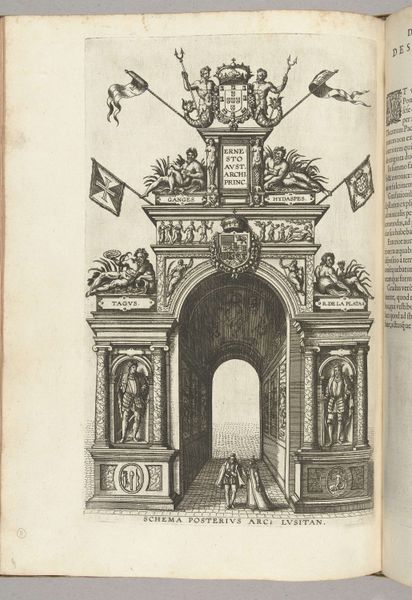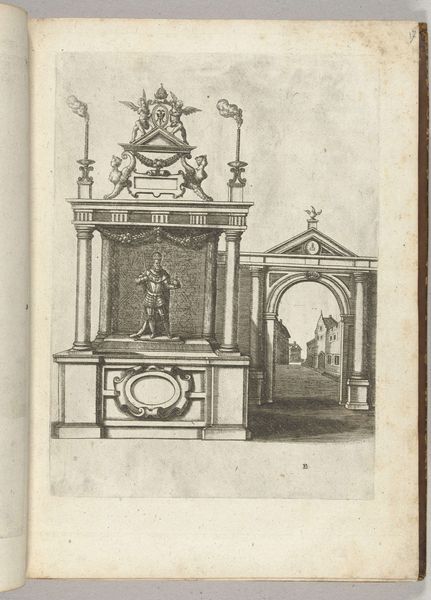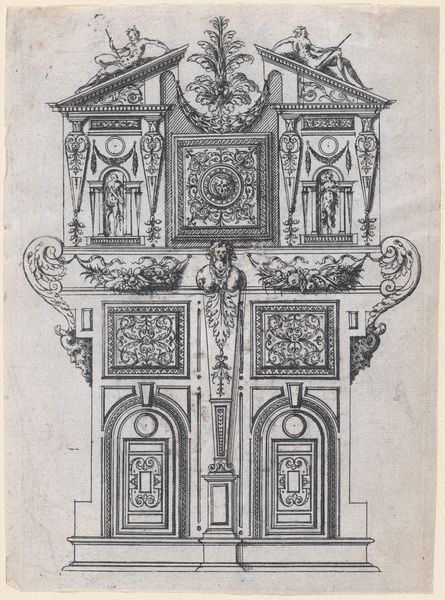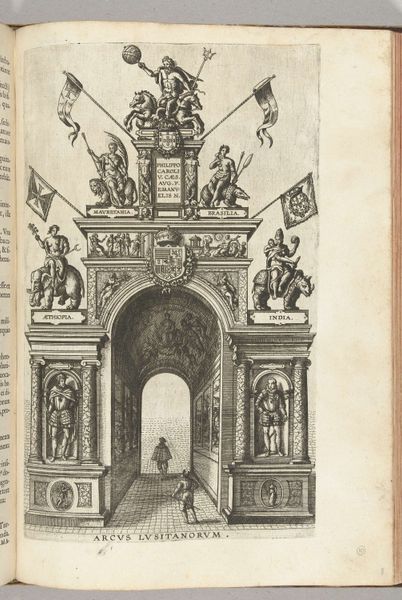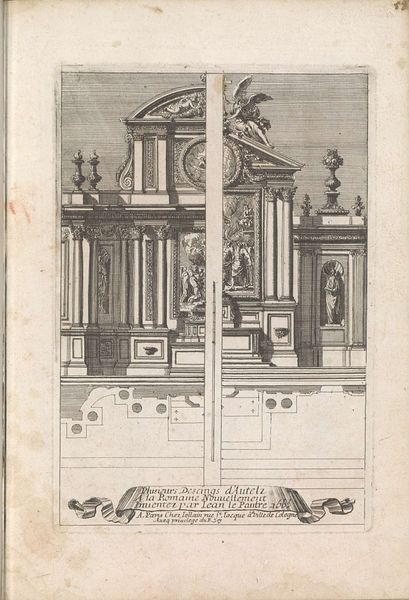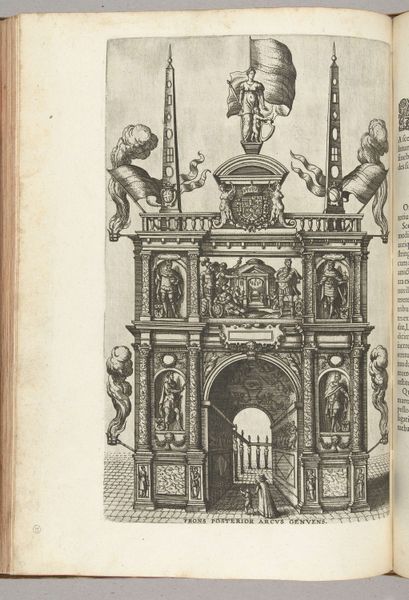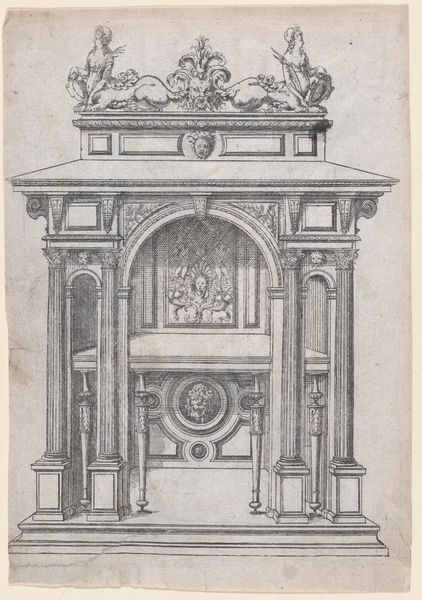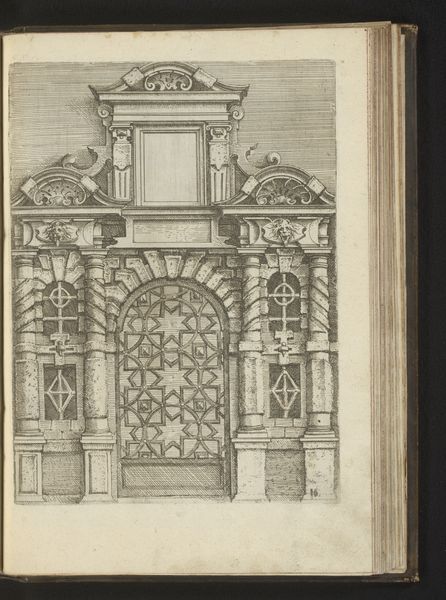
print, engraving
# print
#
figuration
#
11_renaissance
#
line
#
history-painting
#
northern-renaissance
#
engraving
Dimensions: height 298 mm, width 217 mm
Copyright: Rijks Museum: Open Domain
Editor: This engraving, titled "Toneel met keizer Maximiliaan II," dates back to 1594. The identity of the artist is unknown, and the piece is at the Rijksmuseum. It seems to depict some sort of architectural structure, almost like a stage. What's interesting is the incredible detail achieved with such a simple medium. What strikes you most about this work? Curator: What interests me is less what it depicts than *how* it depicts it. Think about the labour involved in creating such a precise engraving. Each line etched, each form meticulously rendered using tools— that's where the real story lies. Editor: I hadn't considered it that way, I was focusing more on the visual, on who commissioned it, for example. Curator: We can ask why this image exists – and that’s partly rooted in the process. The image wasn't just spontaneously generated. Consider its function. Prints like this one disseminated information; images of power were reproduced and circulated widely. Look at the repeated motifs: the crests and the regal figures – each had meaning for contemporary society, solidifying hierarchical relations, influencing viewers. The value resided in communicating power via these reproducible media. Editor: So, the engraving wasn't *just* a picture but part of a broader communication system, a medium, shaping how people perceived authority. Curator: Exactly! Think about who owned the printing press. Whose agenda were these images serving? We can ask these questions, exploring social contexts, labor practices, and power dynamics embedded within what initially appears as simply “art.” The line-work speaks of artisanal skill embedded into an industrial system of mass communication. Editor: I never thought about the economic implications of reproducible art. It recontextualizes the artistic decisions that I assumed were aesthetically motivated. Curator: Precisely. It helps to shift the focus away from inherent artistic "genius," recognizing instead that it is situated inside specific economic and historical conditions. Editor: Thanks for that insight. This is way more exciting than it looks. Curator: Indeed, history written in lines and the possibilities of mass productions – very exciting.
Comments
No comments
Be the first to comment and join the conversation on the ultimate creative platform.
